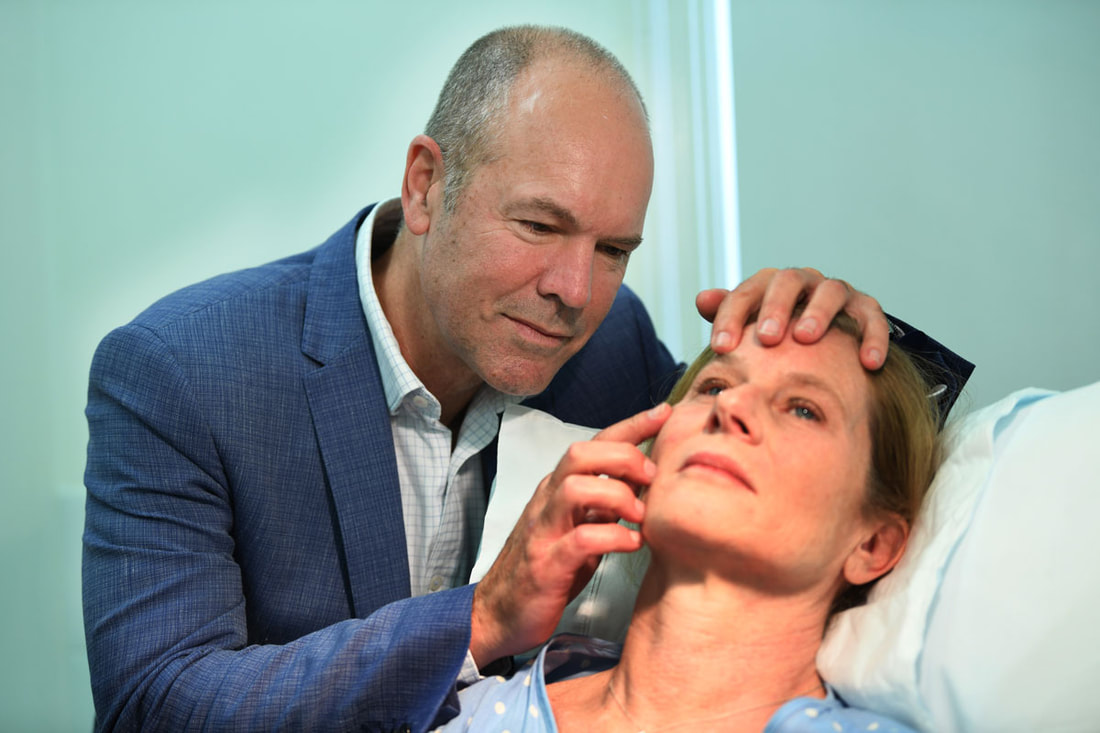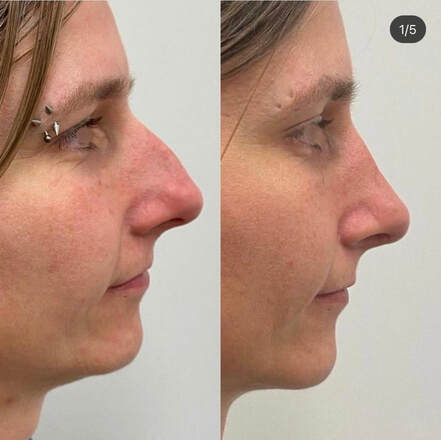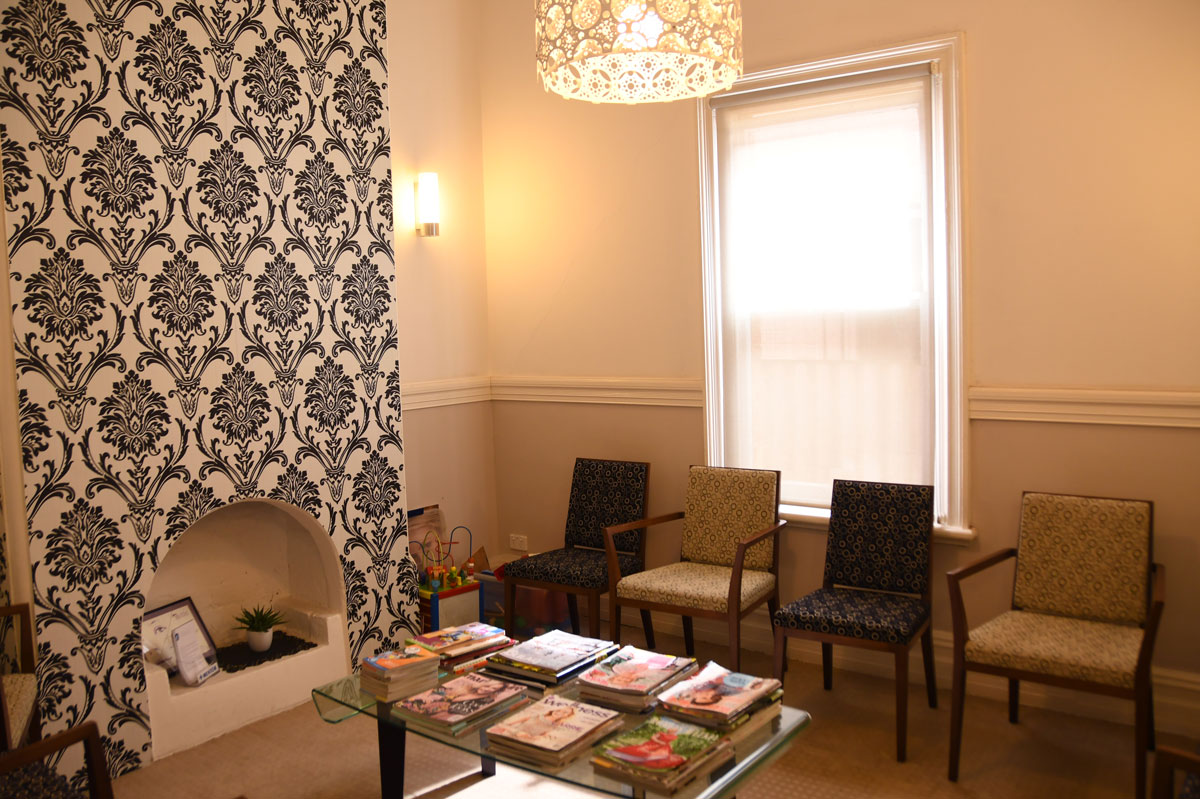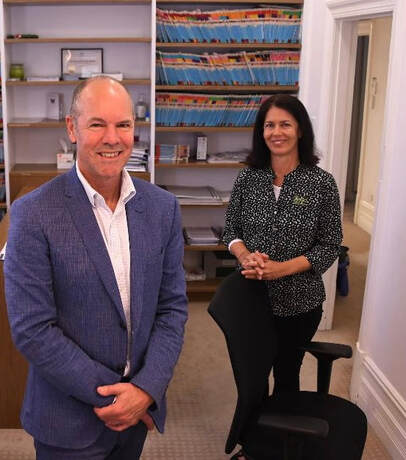What is Rhinoplasty?
|
Rhinoplasty is an operation that alters and improves the appearance of the nose and in some instances helps improve nasal breathing.
The changes may be subtle or dramatic, depending on the needs of the patient. The procedure is accomplished by removing any excess bone and/or cartilage and reshaping the remainder. After alteration of the nose’s supporting structures, the skin is allowed to re-drape over the newly shaped framework to give the nose its new appearance. (educational image of examination - not a patient) |
Usually, rhinoplasty is performed through the nostrils, reducing the need for visible cuts and ensuring there is no scarring. If incisions are needed, they will usually be made along skin creases and lines to ensure scars are not obvious.
Commonly used terms - nose job, smaller nose, bump reduction, hump reduction, surgery for big nose, surgery for crooked nose.
Commonly used terms - nose job, smaller nose, bump reduction, hump reduction, surgery for big nose, surgery for crooked nose.
Dr Lewis Blennerhassett – Rhinoplasty Surgeon
Dr Lewis Blennerhassett is a skilled rhinoplasty surgeon and respected Specialist Plastic Surgeon and has performed rhinoplasty surgery for more than 25 years.
A great communicator, he personally oversees all patient care, from the first consultation until full recovery.
His rhinoplasty work is focused on being meticulous and precise, prioritising safety and quality. His nose surgery is performed only in fully accredited, fully equipped hospitals. His anaesthetists are skilled and highly qualified.
Rhinoplasty care offered by Dr Blennerhassett is highly individualised and based on your needs. After a comprehensive and thorough discussion with you, he will personally work with you on your operation plan.
In most cases, patients can be shown a computer-generated image of their nose to give them a guide as to what we would be aiming for.
Dr Lewis Blennerhassett (MED0001532372), registered medical practitioner
Specialist Plastic Surgeon, Specialist registration in Surgery – Plastic Surgery
Be aware that some doctors performing rhinoplasty are not Specialist Plastic Surgeons.
A great communicator, he personally oversees all patient care, from the first consultation until full recovery.
His rhinoplasty work is focused on being meticulous and precise, prioritising safety and quality. His nose surgery is performed only in fully accredited, fully equipped hospitals. His anaesthetists are skilled and highly qualified.
Rhinoplasty care offered by Dr Blennerhassett is highly individualised and based on your needs. After a comprehensive and thorough discussion with you, he will personally work with you on your operation plan.
In most cases, patients can be shown a computer-generated image of their nose to give them a guide as to what we would be aiming for.
Dr Lewis Blennerhassett (MED0001532372), registered medical practitioner
Specialist Plastic Surgeon, Specialist registration in Surgery – Plastic Surgery
Be aware that some doctors performing rhinoplasty are not Specialist Plastic Surgeons.
Why is a Rhinoplasty performed?
The goal of rhinoplasty surgeon Dr Lewis Blennerhassett is to meet your needs and produce a newly-shaped nose that functions properly and is in balance and harmony with the rest of the face.
The “operated look” is avoided.
Rhinoplasty is performed to;
The “operated look” is avoided.
Rhinoplasty is performed to;
- Alter the size of the nose
- Remove a hump or bump
- Straighten a crooked nose
- Improve symmetry
- Make the nose a little smaller or larger
- Restore the height of a flattened area
- Alter the nasal tip
- Correct birth defects
- Repair damage caused by injury, disease or skin cancer
Is a Rhinoplasty right for you?
Dr Blennerhassett offers personalised, individualised care and will listen to you and work with you to plan your operation and recovery and ensure your needs are met.
However, there are limiting factors that impact on the type of nose that can be achieved.
This includes:
Generally, rhinoplasty surgeon Dr Lewis Blennerhassett follows the below guidelines from the Australian Society of Plastic Surgeons.
Rhinoplasty may be a good option for you if:
Referral Needed -You will now need to first obtain a referral for cosmetic surgery from your GP.
We will also get you to complete a screening questionnaire. The changes are new rulings from the Medical Board and AHPRA. They are being introduced across Australia to further support high quality care. Cosmetic surgery is a serious decision, needing planning and consideration.
If you have any questions or need any assistance with these changes, our lovely staff members are ready on standby to help out. Pls phone Tara, Domenica or Paula on 08 93816977.
Rhinoplasty Before and After images - Post op image - six months after surgery
Outcomes shown are only relevant for this patient and do not necessarily reflect the results other patients may experience, as results may vary due to many factors including the individual’s genetics, diet and exercise.
However, there are limiting factors that impact on the type of nose that can be achieved.
This includes:
- Skin texture
- Skin thickness
- Previous injury and surgery
- Individual variations in healing
- Facial proportions and contour
Generally, rhinoplasty surgeon Dr Lewis Blennerhassett follows the below guidelines from the Australian Society of Plastic Surgeons.
Rhinoplasty may be a good option for you if:
- Your facial growth is complete
- You are physically healthy and you do not have medical conditions that impair healing or increase risk of complications
- You have realistic expectations of what nose surgery can accomplish
- You understand it may take 12 months for the final results to emerge
- You experience breathing problems
Referral Needed -You will now need to first obtain a referral for cosmetic surgery from your GP.
We will also get you to complete a screening questionnaire. The changes are new rulings from the Medical Board and AHPRA. They are being introduced across Australia to further support high quality care. Cosmetic surgery is a serious decision, needing planning and consideration.
If you have any questions or need any assistance with these changes, our lovely staff members are ready on standby to help out. Pls phone Tara, Domenica or Paula on 08 93816977.
Rhinoplasty Before and After images - Post op image - six months after surgery
Outcomes shown are only relevant for this patient and do not necessarily reflect the results other patients may experience, as results may vary due to many factors including the individual’s genetics, diet and exercise.
At what age can Rhinoplasty be performed?
Rhinoplasty surgeon Dr Lewis Blennerhassett prefers to wait until skeletal growth has ceased.
Exceptions are made in certain medical circumstances.
Exceptions are made in certain medical circumstances.
Rhinoplasty Surgery Risks
From the Australian Society of Plastic Surgeons (https://plasticsurgery.org.au/)
Modern surgery is generally safe but does have the potential for risks and complications to occur, states the Australian Society of Plastic Surgeons.
Some general risks and complications of surgery may include:
Does a Rhinoplasty require anaesthesia?
Dr Blennerhassett performs rhinoplasty under a light general anaesthetic – this means you will be sound asleep. This allows the anaesthetist to have complete control of the airway and keep any drainage from getting into your lungs. It also keeps you from moving around during the surgery.
Rhinoplasty surgeon Dr Lewis Blennerhassett ensures his nose surgery is performed only in reputable fully accredited, fully equipped hospitals, with highly qualified and skilled anaesthetists.
Modern surgery is generally safe but does have the potential for risks and complications to occur, states the Australian Society of Plastic Surgeons.
Some general risks and complications of surgery may include:
- Heavy bleeding from an operated site
- Infection that may require treatment with antibiotics or further surgery in some cases
- Allergic reaction to sutures, dressings or antiseptic solutions
- The formation of a large blood clot (haematoma) beneath an incision site that may require drainage
- Pain, bruising and swelling around the operated site(s)
- Keloids and hypertrophic scars that are raised, red and thickened scars. These may form over the healed incisions. They may be itchy, annoying and unsightly but are not a threat to health
- Slow healing
- Separation of wound edges
- Short-term nausea following general anaesthesia and other risks related to anaesthesia
- Pain that may be severe and ongoing
- Nose may feel numb or have altered sensation after the bruising and swelling subside
- The upper front teeth may feel numb temporarily
- The nose’s appearance may be unsatisfactory and require revisional surgery
- Sense of smell may be impaired, and in rare cases lost or distorted
- The nose may be slightly swollen for months
- Skin under the eyes may be darkened for a period of over six months
- Underlying support structure of the nose may be weak and cause the nose to flatten
- An implant (if one was inserted) may extrude into the nose or through the skin
- Major airways may become narrowed, causing difficulty in breathing through the nose
- Dr Blennerhassett will discuss your individual expectations, risk and recovery management in person
Does a Rhinoplasty require anaesthesia?
Dr Blennerhassett performs rhinoplasty under a light general anaesthetic – this means you will be sound asleep. This allows the anaesthetist to have complete control of the airway and keep any drainage from getting into your lungs. It also keeps you from moving around during the surgery.
Rhinoplasty surgeon Dr Lewis Blennerhassett ensures his nose surgery is performed only in reputable fully accredited, fully equipped hospitals, with highly qualified and skilled anaesthetists.
Is there much pain with Rhinoplasty?
Oral pain medication for discomfort will be provided. Some of the discomfort is caused by not being able to breathe through your nose.
Your nose will continue to feel a little blocked or stuffy for the first couple of weeks after surgery.
This is general advice for educational purposes only. Dr Blennerhassett will discuss your individual expectations and pain management with you.
Your nose will continue to feel a little blocked or stuffy for the first couple of weeks after surgery.
This is general advice for educational purposes only. Dr Blennerhassett will discuss your individual expectations and pain management with you.
Are there ever incisions on the outside of the nose?
Occasionally, a small incision is made on the column of skin between the nostrils on the underneath surface of the nose. This incision usually heals very well and is not visible at conversational distances. If the base of the nose is too wide, it is narrowed by making incisions in the creases on both sides where the nostril and cheek join.
How much swelling will there be with a Rhinoplasty?
Although medicines are given prior to surgery to keep swelling to a minimum, some swelling and bruising of the nose around the eyes is expected.
The degree of swelling and bruising varies with different patients.
Swelling and Bruising;
You will notice your nose to be visibly swollen for 6 weeks, but other people may not notice your swelling after the first two weeks or so.
*This is general advice for educational purposes only. Dr Blennerhassett will discuss your individual expectations and pain management with you.
Wound Care
How to manage your skin and nostril wounds after the surgery
If you have external stitches on the columella of the nose (the part of the nose that joins with the upper lip), these will be removed at one week after surgery. Following removal of the stitches, usually only moisturiser is required for the wound. If the wound is slow to heal (which is uncommon), a daily application of Betadine ™ is recommended until the wound is healed.
The remaining incisions and stitches used in rhinoplasty are inside the nostrils and are dissolving stitches. These do not need to be removed. They will fall out by themselves usually after a week or two.
If there is any blood or crusting in the nostrils in the days after surgery, it is important NOT to pick at this or try to blow it out. This could cause bleeding.
Saline nasal sprays are available from your pharmacy and can reduce the drying or crusting if necessary.
Usually this is temporary and settles by approximately one week after the surgery.
*This is general advice for educational purposes only. Dr Blennerhassett will discuss your individual expectations with you.
The degree of swelling and bruising varies with different patients.
Swelling and Bruising;
- Reaches its peak 48-72 hours following surgery and then starts subsiding. Icepacks to the eyes will help during that time.
- Will still be present when the cast is removed at one week.
- Will continue to reduce and after 10-14 days, most of the visible swelling will have disappeared. However, there will be a feeling of numbness and stiffness of the tip of the nose, which means some swelling persists.
- Will take several months to subside completely
- Is slower to resolve in patients with thick, oily skin.
You will notice your nose to be visibly swollen for 6 weeks, but other people may not notice your swelling after the first two weeks or so.
*This is general advice for educational purposes only. Dr Blennerhassett will discuss your individual expectations and pain management with you.
Wound Care
How to manage your skin and nostril wounds after the surgery
If you have external stitches on the columella of the nose (the part of the nose that joins with the upper lip), these will be removed at one week after surgery. Following removal of the stitches, usually only moisturiser is required for the wound. If the wound is slow to heal (which is uncommon), a daily application of Betadine ™ is recommended until the wound is healed.
The remaining incisions and stitches used in rhinoplasty are inside the nostrils and are dissolving stitches. These do not need to be removed. They will fall out by themselves usually after a week or two.
If there is any blood or crusting in the nostrils in the days after surgery, it is important NOT to pick at this or try to blow it out. This could cause bleeding.
Saline nasal sprays are available from your pharmacy and can reduce the drying or crusting if necessary.
Usually this is temporary and settles by approximately one week after the surgery.
*This is general advice for educational purposes only. Dr Blennerhassett will discuss your individual expectations with you.
What do I need to do before a Rhinoplasty?
|
Rhinoplasty care offered by Specialist Plastic Surgeon Dr Lewis Blennerhassett is highly personalised and based on your individual needs. At your first visit, Dr Blennerhassett will discuss your concerns and requirements, and work with you on an operative plan. A thorough physical assessment is necessary, as well as a detailed discussion of the expected outcomes from the surgery for each individual patient. A comprehensive discussion of the relevant risks and side effects of the procedure will also take place. |
At this point, we can also show you patient-approved “before and after” photographs of other nose surgery cases, if you wish to see them.
Once an operative plan has been formulated, an accurate estimate of the costs involved can be given to you.
Generally, for all patients Dr Blennerhassett recommends that;
Once an operative plan has been formulated, an accurate estimate of the costs involved can be given to you.
Generally, for all patients Dr Blennerhassett recommends that;
- You inform us of all the medications, vitamins, tonics, naturopath and alternative medicine treatment that you are taking, especially medications that may increase your likelihood of bleeding.
- You arrange for a friend or family member to pick you up from the hospital.
- You arrange for a friend or family member to stay with you for at least 1-2 days after you leave the hospital.
What do I need to do after a Rhinoplasty?
Rhinoplasty patients can usually go back to sedentary work/school one week after surgery.
You should avoid strenuous activity (any activity which increases your heart rate) for two weeks. After two weeks, you may gradually increase your activity so that you are back to your regular routine at three weeks.
Avoid all contact sport for 4 weeks after surgery.
You should avoid sun exposure (use sunscreen), getting your nose hit and letting glasses rest on your nose for 8 weeks.
You should avoid strenuous activity (any activity which increases your heart rate) for two weeks. After two weeks, you may gradually increase your activity so that you are back to your regular routine at three weeks.
Avoid all contact sport for 4 weeks after surgery.
You should avoid sun exposure (use sunscreen), getting your nose hit and letting glasses rest on your nose for 8 weeks.
What does Rhinoplasty aftercare involve?
|
Specialist Plastic Surgeon / rhinoplasty surgeon Dr Lewis Blennerhassett prides himself on his high-quality aftercare, which is overseen personally by him with the assistance of our highly experienced practice nurse. For the first week after surgery, you will have a splint on the outside of the nose. This is a moulded plastic splint which will be shaped to your nose at the time of surgery. This is to be worn constantly for the first week. After the first week, you will wear the splint at night time for a further two weeks. |
At the week one post-op visit;
During the recovery period, Dr Blennerhassett will be contactable to answer your questions. His mobile number will be provided to you during pre-surgery consultation.
Dr Blennerhassett’s patients are given a website password to access our highly specialised aftercare advice on recovery and scar management. Patient information sheets can also be provided.
This is general recovery advice for educational purposes only. Dr Blennerhassett will discuss your individual expectations and recovery management with you.
- Your splint will be removed.
- Any stitches that are visible will be removed.
- An assessment of the healing progress will be made.
- You will be given instructions on how to protect your nose and minimise swelling over the next few weeks.
- You will need to place adhesive tape over the bridge of the nose for a further three weeks. Our nurse will show you how to do this.
During the recovery period, Dr Blennerhassett will be contactable to answer your questions. His mobile number will be provided to you during pre-surgery consultation.
Dr Blennerhassett’s patients are given a website password to access our highly specialised aftercare advice on recovery and scar management. Patient information sheets can also be provided.
This is general recovery advice for educational purposes only. Dr Blennerhassett will discuss your individual expectations and recovery management with you.
How soon after a Rhinoplasty can glasses be worn?
Glasses can be worn while the cast is on. After it is removed, they can still be worn but should not rest on the nose for around three more weeks. We will show you how to do this. Contacts can be worn as soon as the swelling goes down around the eyes so that they can be easily inserted and removed.
Rhinoplasty words to know
- (Source: Australian Society of Plastic Surgeons Glossary)
- Columella:
The narrow strip of tissue that separates the nostrils - Cartilage:
Connective tissue that forms the structure of the nose - General anaesthesia:
Drugs and/or gases used during an operation to relieve pain and alter consciousness




